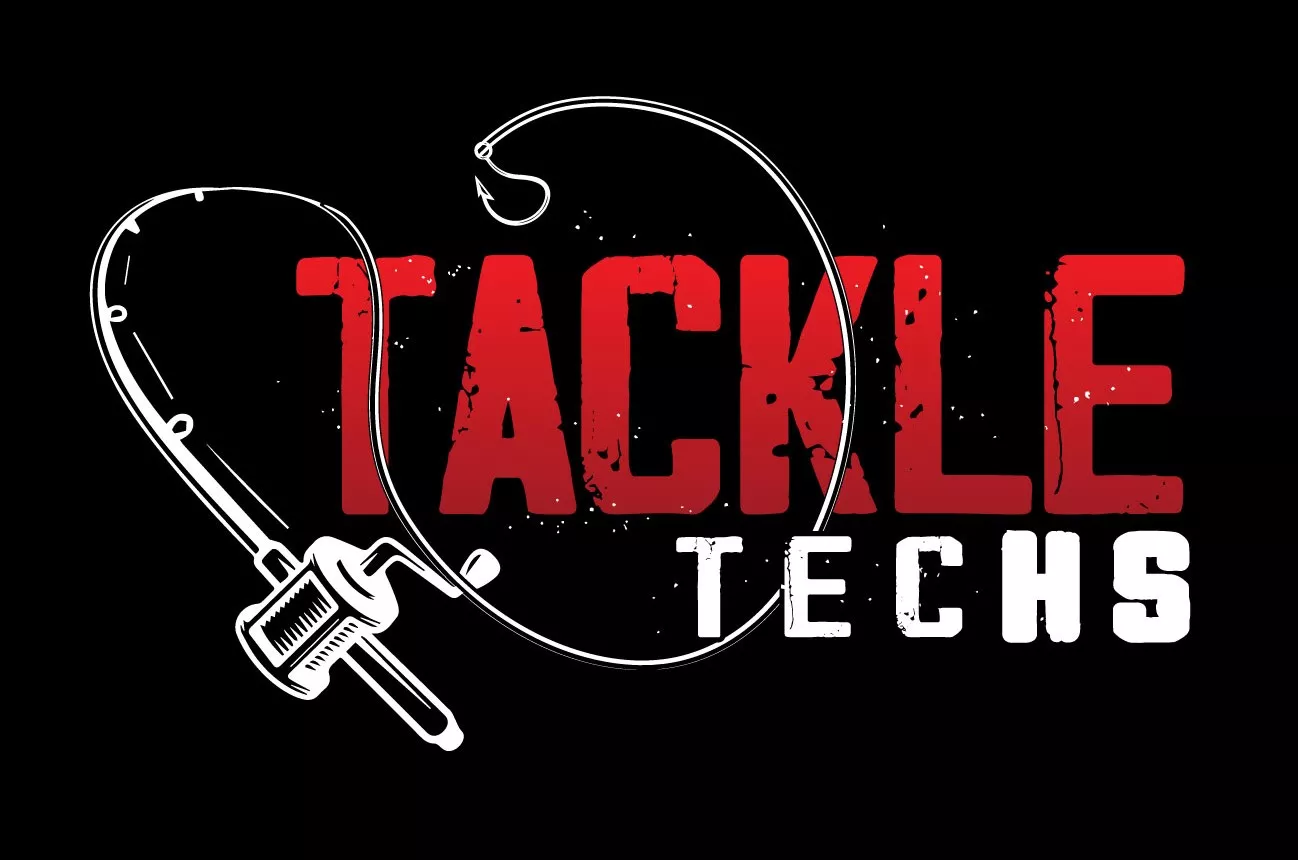Fishing Gear for Beginners 101: Master the Basics and Catch Your First Fish
Fishing Gear for Beginners
Fishing is an age-old pastime that has been enjoyed by people all over the world for thousands of years. Whether you’re looking to catch fish for food, sport, or simply to enjoy the great outdoors, fishing is a rewarding and relaxing activity that can be enjoyed by people of all ages and skill levels.
If you’re new to fishing, it can be intimidating to figure out where to start. With so many different types of fishing gear available, it can be difficult to know what you need to get started. In addition to fishing rods, reels, and lines, there are also hooks, bait, lures, and other accessories that can make a big difference in your success on the water.
But don’t worry – you don’t need to be an expert to get started with fishing. In fact, one of the most rewarding aspects of fishing is the process of learning and improving your skills over time. In this article, we’ll cover the basics of fishing gear for beginners, including what types of equipment you’ll need to get started, how to choose the right gear for your needs, and some tips and tricks for catching your first fish.
So if you’re ready to dive into the world of fishing and experience the thrill of reeling in your first catch, keep reading! We’ve got everything you need to know to get started with fishing and start enjoying this rewarding hobby.
Table of Contents
Types of Fishing Gear
There are many different types of fishing gear available, and choosing the right gear for your needs will depend on several factors, including the type of fish you’re targeting, the location where you’ll be fishing, and your personal preferences as a fisherman. (Don’t worry, we added a shopping list near the end of this article if you just want to buy and get on the water)
Here are some of the most common types of fishing gear that you’ll encounter:
Fishing rods: Fishing rods come in a variety of lengths, materials, and styles, and are designed to help you cast your line and reel in your catch. Depending on the type of fishing you’re doing, you may need a specialized rod, such as a fly rod for fly fishing or a surf rod for shore casting.
Fishing reels: Fishing reels are used to hold and retrieve the fishing line, and come in several different types, including spinning reels, baitcasting reels, and spincast reels. Each type of reel has its own strengths and weaknesses, so it’s important to choose the right type for your needs.
Our list of the Best Saltwater Spinning ReelsFishing line: Fishing line is what connects your bait or lure to your rod and reel, and is available in several different types, including monofilament, braided, and fluorocarbon. The type of line you choose will depend on the type of fish you’re targeting and the conditions where you’ll be fishing.
Hooks: Hooks are used to catch fish by attaching to the bait or lure and piercing the fish’s mouth when it bites. Hooks come in many different sizes and styles, and choosing the right hook will depend on the type of fish you’re targeting and the size of the bait or lure you’re using.
Bait and lures: Bait and lures are used to attract fish to your hook and convince them to bite. Bait can include live or dead bait, such as worms or minnows, while lures can include artificial baits, such as spinners or jigs.
Accessories: There are many different accessories that can be useful when fishing, including fishing vests, tackle boxes, fishing pliers, and fish finders. These accessories can help make your fishing experience more comfortable, convenient, and successful.
These are just some of the many types of fishing gear available. As you become more experienced as a fisherman, you’ll likely develop your own preferences for the types of gear that work best for you.
How to Put Line on a Reel
Putting line on a fishing reel is an important step in setting up your fishing gear. Here are the steps to follow:
Choose the right line: The first step is to choose the right fishing line for your reel. Make sure to check the reel’s instruction manual or online specifications to find out what type and size of line it can accommodate.
Prepare the line: Before putting the line on the reel, tie the end of the line to the spool of the reel using an arbor knot. Then, spool the line onto the reel, making sure that it is evenly distributed and not twisted or tangled.
Attach the line to the reel: After the line is spooled onto the reel, thread it through the guides on the rod and tie it to the reel’s spool using another knot, such as a uni knot or a palomar knot.
Wind the line onto the reel: To wind the line onto the reel, turn the handle clockwise while holding the line with your other hand to keep it taut. Make sure to wind the line onto the reel tightly and evenly, without overlapping or leaving gaps.
Fill the reel to the appropriate level: Fill the reel with the line until it reaches the appropriate level, which is usually indicated by a line on the spool or in the instruction manual. Avoid overfilling the reel, as this can cause tangles and other problems when casting.
Test the line: Once the line is spooled onto the reel, test it by casting the line and retrieving it. Check for any twists or tangles, and adjust the line as necessary.
By following these steps, you can easily spool your fishing reel with line and get ready for a great day of fishing.
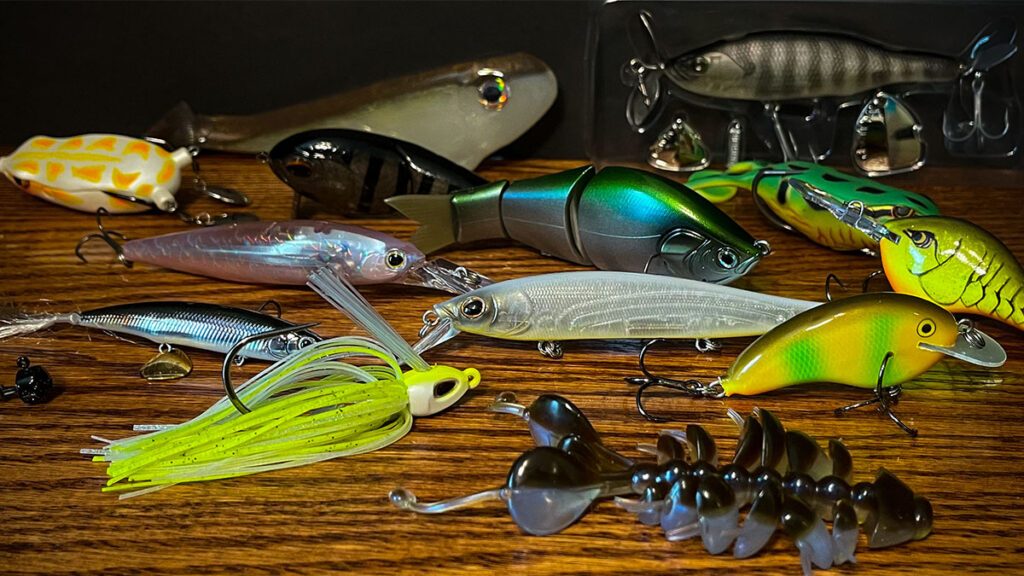
Fishing Lures Explained | 10 Lure Types Certain to Catch More Fish
We’ve put together this guide to help you understand the different types of fishing lures and how to use them to catch more fish. From crankbaits and spinnerbaits to jigs, soft plastics, and topwater lures, we’ll explain the unique features of each type of lure, as well as when and where to use them for maximum success.
Beginner Fishing Kit
Here at Tackle Techs, we’ve got you covered with two quick-start fishing setups that will have you catching your first fish in no time! These beginner-friendly gear lists are carefully curated by our expert team and are perfect for those new to the sport.
But before you dive in, it’s important to determine whether you’ll be fishing in freshwater or saltwater. If you’re more than a mile inland from the ocean, chances are you’ll be fishing in freshwater. However, if the body of water you’ll be fishing in is affected by the tide, then it’s likely saltwater.
Not sure which one you’ll be fishing in? No problem! Just reach out to your local conservation department for guidance. With these helpful tips and our beginner fishing kits, you’ll be reeling in your first catch in no time!
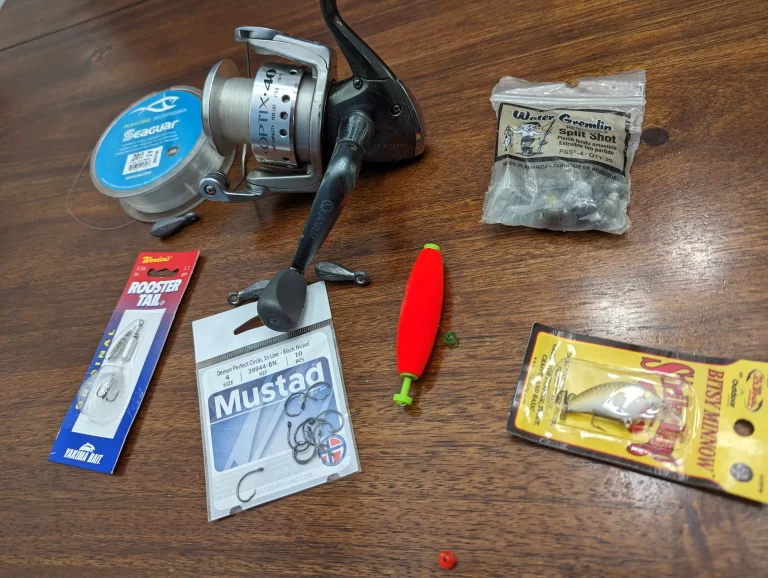
Freshwater Kit
- Quantum Optix Spinning Combo
- 10lb Test Fishing Line
- Removable Split Shot Weights
- Hooks
- Floats
- Earthworms or live minnows from your local bait store
- White Spinner – if you would prefer lures
Tie the hook to the line using any know of your choice. Then pinch a small split shot about 6 inches above that onto the line. Finally attach the float about 1.5 – 2.5ft above the hook.
hook your earthworm or minnow and cast it out, look for structure in the water like fallen trees or docks and try to fish near those.
Saltwater Kit
- Quantum Optix Spinning Combo
- 14lb Test Fishing Line
- Hooks
- 1/2oz Egg Sinkers
- Frozen shrimp or mullet from your local bait store
Slide your egg sinker at least a foot up the line, then loop the line through the sinker a few times to hold it in place. Tie your hook to the end of the line and add your bait. There are better, more complicated ways, to do this but this will get you a fish guaranteed.
Fishing for Beginners
How to Cast
Hold the rod: Hold the rod with your dominant hand and place your other hand on the reel. Make sure your grip is firm but not too tight.
Hold the line: Hold the line with your index finger against the rod handle. Make sure the line is not tangled or twisted.
Position the lure: Position the lure or bait about a foot from the end of the rod, with the rod tip pointing toward the ground.
Prepare to cast: Pull the rod back slowly, with the tip pointing behind you. Use your wrist and arm to create a smooth, fluid motion.
Cast the line: Once the rod is fully loaded, quickly move it forward, releasing the line with your finger as the rod tip moves forward. Allow the lure to land gently on the water’s surface.
Reel in the line: After the lure lands on the water, begin reeling in the line slowly. Keep the rod tip up to feel for any bites or strikes.
Set the hook: If you feel a bite, quickly pull the rod back to set the hook in the fish’s mouth.
Retrieve the fish: Once you’ve hooked the fish, continue to reel in the line slowly, using the rod to guide the fish toward you.
By following these steps, you can cast your fishing pole with confidence and increase your chances of catching fish. With practice and patience, you’ll be able to cast your line with precision and accuracy, making you a more successful and confident angler.
Where to Catch Your First Fish
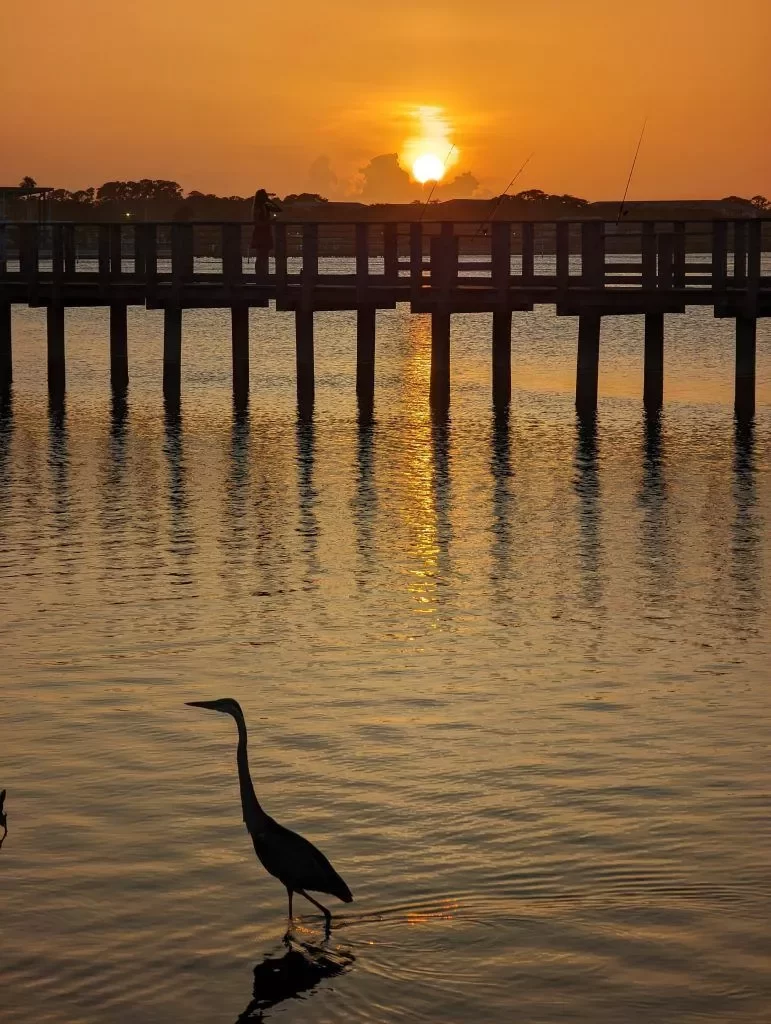
If you’re looking to catch your first fish, there are many great places to try. Here are some suggestions:
Local lakes and ponds: Look for small bodies of water in your area, such as local lakes or ponds, that have a good population of fish. These areas are often stocked with fish by local organizations or government agencies, making them ideal for beginners.
Rivers and streams: Rivers and streams can be great places to catch fish, especially if you’re looking for trout or other freshwater species. Look for areas with slow-moving water and plenty of underwater structure, such as rocks, logs, or fallen trees, where fish are likely to hide.
Fishing piers and jetties: Fishing piers and jetties can provide easy access to deeper water, making them good spots for catching larger fish. These structures are often located in areas where fish are known to congregate, such as near underwater ledges or drop-offs.
Beaches and shorelines: If you live near the coast, beaches and shorelines can be great places to catch fish, especially if you’re interested in surf fishing. Look for areas where the waves are breaking, as this is where fish are often feeding on baitfish and other prey.
Stocked trout ponds: Many areas have stocked trout ponds that are specifically designed for beginner anglers. These ponds are often stocked with trout that are easy to catch, making them a great place to learn the basics of fishing.
No matter where you choose to fish, make sure to follow local fishing regulations and obtain any necessary licenses or permits before you start fishing. With a little patience and practice, you’ll be well on your way to catching your first fish!
Using Lures
There are several basic retrieves that you can use when fishing with lures, each of which can be effective in different situations. Here are some of the most common retrieves for lures:
The steady retrieve: The steady retrieve is one of the simplest and most common retrieves for lures. Simply reel in the lure at a steady pace, without any jerks or pauses. This retrieve is effective for lures that mimic baitfish or other prey that swim steadily through the water.
The stop-and-go retrieve: The stop-and-go retrieve involves reeling in the lure with a few quick turns, then pausing for a few seconds before repeating the process. This retrieve is effective for lures that mimic injured or fleeing prey.
The twitch retrieve: The twitch retrieve involves jerking the rod tip up sharply, causing the lure to jump and twitch through the water. This retrieve is effective for lures that mimic insects or other small prey that move quickly through the water.
The jerk retrieve: The jerk retrieve involves jerking the rod tip sharply to the side, causing the lure to dart and jerk through the water. This retrieve is effective for lures that mimic injured or fleeing prey, such as crankbaits or jerkbaits.
The slow retrieve: The slow retrieve involves reeling in the lure at a very slow pace, with occasional pauses and twitches. This retrieve is effective for lures that mimic slow-moving or lethargic prey, such as soft plastic baits or jigs.
By experimenting with these different retrieves and adjusting your technique to match the conditions and the type of lure you’re using, you can increase your chances of catching fish and have more fun on the water. Remember to stay patient and persistent, and don’t be afraid to try new things and mix up your approach until you find what works best for you.

Fishing Lures Explained | 10 Lure Types Certain to Catch More Fish
We’ve put together this guide to help you understand the different types of fishing lures and how to use them to catch more fish. From crankbaits and spinnerbaits to jigs, soft plastics, and topwater lures, we’ll explain the unique features of each type of lure, as well as when and where to use them for maximum success.
How to Handle Fish

Properly handling fish is important to ensure their survival and to maintain their quality for consumption. Here are some tips on how to properly handle fish:
Use wet hands: When handling fish, it’s important to keep them wet to prevent damage to their scales and slime coat. Wet your hands before touching the fish to minimize stress and avoid damaging the fish’s skin.
Use a net: When landing fish, use a net to minimize stress and avoid handling the fish too much. Make sure the net is properly sized for the fish you’re catching and is made of soft material to avoid damaging their scales.
Remove the hook carefully: When removing the hook, use a pair of pliers or a dehooker to avoid damaging the fish’s mouth or gills. If the hook is deeply embedded, it may be best to cut the line and release the fish with the hook still in place.
Avoid squeezing the fish: Squeezing the fish too tightly can cause damage to their internal organs and decrease their chances of survival. Handle the fish gently and avoid squeezing them tightly.
Release the fish properly: If you’re releasing the fish back into the water, do so as quickly and gently as possible. Hold the fish in the water until it is strong enough to swim away on its own.
Clean and store the fish properly: If you plan to keep the fish for consumption, clean and store it properly to maintain its quality. Keep the fish cool and dry, and clean it thoroughly to remove any bacteria or parasites.
By following these tips, you can help ensure the survival of fish and maintain their quality for consumption. Additionally, proper handling of fish can enhance your overall fishing experience by minimizing stress and helping you to form a deeper appreciation for the beauty and fragility of these fascinating creatures.
Fishing Tips and Tricks
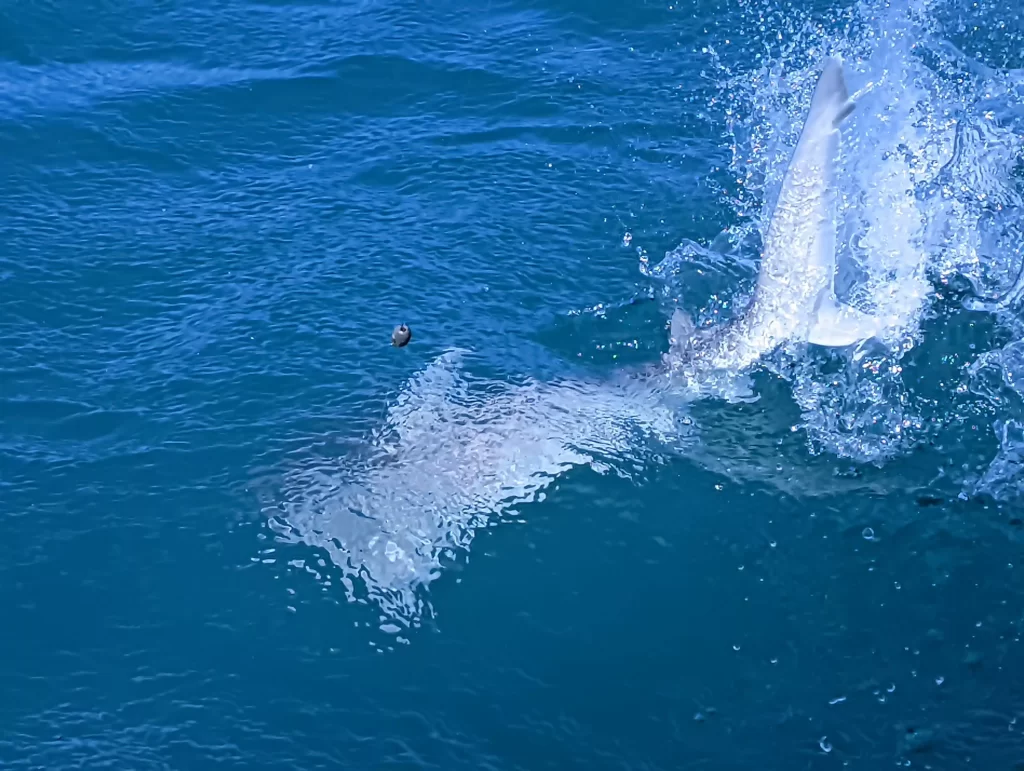
Start with the basics: Learn the basic techniques of casting, reeling, and baiting before moving on to more advanced techniques. Make sure to practice in a safe and open area before hitting the water.
Choose the right gear: Select gear that is appropriate for the type of fishing you’ll be doing and the fish you’ll be targeting. A good quality rod and reel combo, along with the right line and bait, can make a big difference in your success.
Learn about the fish: Research the fish species in the area where you’ll be fishing, including their habits and behaviors. This can help you choose the right bait and technique for catching them.
Our articles on snook and redfishPay attention to the weather: Check the weather forecast before heading out and be prepared for changes in temperature and conditions. Fish are often more active during certain times of the day or in certain weather conditions.
Observe the water: Look for signs of fish activity, such as jumping fish or ripples on the surface of the water. This can help you locate fish and determine where to cast your line.
Be patient: Fishing requires patience and persistence. Don’t get discouraged if you don’t catch anything right away. Keep trying and experimenting with different techniques and baits until you find what works.
Practice catch and release: If you’re not planning to keep the fish for consumption, practice catch and release to minimize harm to the fish and preserve the population for future generations.
Remember to always follow local fishing regulations and respect the environment and the fish you’re trying to catch.
